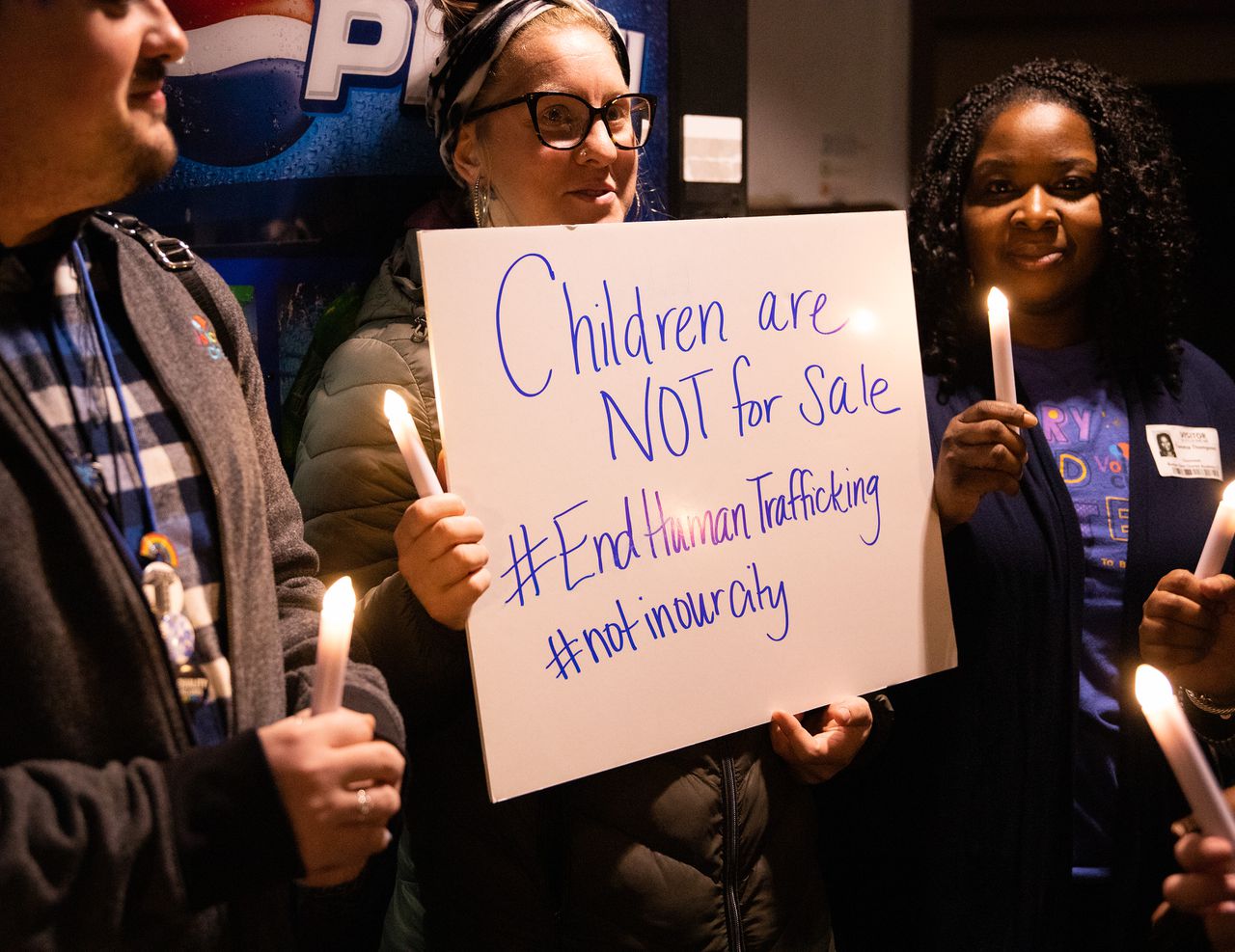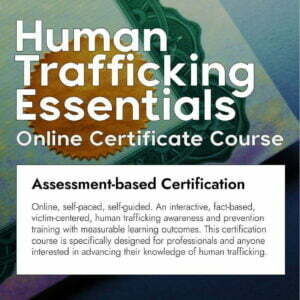Health care workers should look for signs of human trafficking, Michigan doctor says

Nearly 88% of human trafficking survivors report accessing health care services during their trafficking situation, according to a nonprofit advocacy group known as the Polaris Project.
That statistic could be surprising. However, it's appropriate – if not a slight underestimate – once people start to understand what trafficking looks like, explained Dr. Jamie Hope, an emergency medicine physician for Corewell Health, formerly known as Beaumont Health in southeast Michigan.
“The numbers are starting to increase in terms of how many we recognize, but we don't know how many are out there,” she said. “On a given day, if we see 100 patients, how many of those were trafficking victims? We don't know until we get better as a society and as a profession at recognizing it.”
Human trafficking involves the use of force, fraud or coercion to obtain labor or sex. Traffickers may use violence, manipulation, false promises and romantic relationships to lure in victims, who can be any age, race, gender, or nationality, according to the U.S. Department of Homeland Security.
Victims can be subjected to injuries, beatings, torture, and labor trauma, which can often result in needed medical attention. Multiple studies have found that victims are most likely to seek medical care from emergency departments (63%), though they may also seek care from Planned Parenthood clinics, private practices, urgent care, and other local clinics, according to a study published in 2022 that surveyed health care workers.
Related: Police, survivors debunk human trafficking kidnapping myths
In 2020, Polaris Project identified 10,583 situations of trafficking and 16,658 victims of trafficking nationwide. The majority of situations (7,648) were for sex, with 1,052 for labor, 334 for sex and labor, and 1,549 for other/not specified reasons.
Trafficking data in Michigan remains incomplete, though the state may be making headway. Within the last year, the state's Human Trafficking Commission has developed a new website, created standardized data categories for victim service providers, and expanded access to training and public awareness resources.
“Human trafficking continues to plague the most vulnerable among us,” wrote Attorney General Dana Nessel in the commission's 2022 report to the governor and legislature. “Using control and submission, traffickers exploit their victims, subjecting them to sexual, physical and emotional abuse. To prevent these crimes, it remains incumbent on all of us to know the signs, review the resources and report trafficking when we suspect it.”
Too often, people hear the term human trafficking and recall scenes from a “Law and Order” episode or a movie in which people are chained in a basement and in need of rescue. But Hope said that's unrealistic.
More often, individuals undergo psychological conditioning and powerful “mental shackling” with a combination of beatings, threats and other means of coercion, Hope said. Victims can be in public alone and not necessarily screaming for help. As a result, trafficking victims have often developed strongly-honed survival instincts, sometimes to the detriment of their social skills.
Hope has spent time training her medical peers to keep suspicions high with patients. In recent years, it's become a Michigan licensing requirement for nurses and physicians to have human trafficking recognition and treatment training.
She teaches them to watch for defensive injuries, repeated sexual trauma and infections, and a history of injuries that don't fit the patient's explanation for what caused them.
Trauma from their trafficking situation or past experiences with the medical system may cause victims to be angry, rude, or closed off. They may seem reserved and potentially glued to their cellphone.
“If the trafficker isn't there, they might be forcing them to check in constantly,” Hope said. “We don't know what threats they're under. Looking for behavior like that and understanding where they are coming from and that as a trauma response really helps open our eyes to see a lot more.”
Related: Candlelight vigil brings awareness to human trafficking in Genesee County
Healthcare workers are learning to create psychologically safe environments for patients to get help and feel comfortable and potentially open up about their trauma. That may include something like asking what they do to get food and survive.
“The reason slavery can continue is these victims are right under our noses and people don't see it so we don't do anything about it,” Hope said.
“We want them to see that we're an ally and an advocate. It might give them an opportunity to see that somebody cares and even if they don't feel comfortable disclosing it that day, it plants a seed of hope. We hope in the future, anytime they are seeking help, whether it be for an injury or they need help to get out of that life, that the medical system is a safe place for them to come.”
Outside the medical community, Hope said it's important for other professionals to be educated and aware of the signs of trafficking.
The Michigan Human Trafficking Commission is seeking to require human trafficking training for commercial drivers, educators, education-based counselors and cosmetologists. Airports and truck stops can be avenues for moving victims, while hair and nail salons can be repeat stops for victims.
“As a trafficker, if you are selling a human slave, the better your human slave looks, the more money you can get,” Hope said. “Just because somebody looks well put together and not disheveled, doesn't mean they're not a victim of human trafficking. We're teaching people in those settings to recognize that as well.”
If you or someone you know may be a victim of human trafficking, there is a toll-free National Human Trafficking Hotline at 1-888-373-7888 with advocates available 24/7 to take reports. You can also text the hotline at 233733 or start an online chat, here.
This “Eyes on Trafficking” story is reprinted from its original online location.
 ABOUT PBJ LEARNING
ABOUT PBJ LEARNING
PBJ Learning is a leading provider of online human trafficking training, focusing on awareness and prevention education. Their interactive Human Trafficking Essentials online course is used worldwide to educate professionals and individuals how to recognize human trafficking and how to respond to potential victims. Learn on any web browser (even your mobile phone) at any time.
More stories like this can be found in your PBJ Learning Knowledge Vault.
EYES ON TRAFFICKING
This “Eyes on Trafficking” story is reprinted from its original online location.
ABOUT PBJ LEARNING
PBJ Learning is a leading provider of online human trafficking training, focusing on awareness and prevention education. Their interactive Human Trafficking Essentials online course is used worldwide to educate professionals and individuals how to recognize human trafficking and how to respond to potential victims. Learn on any web browser (even your mobile phone) at any time.
More stories like this can be found in your PBJ Learning Knowledge Vault.
